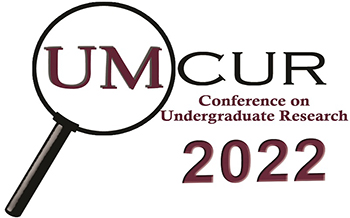Project Type
Presentation
Faculty Mentor’s Full Name
Hilary Martens
Faculty Mentor’s Department
Geosciences
Abstract / Artist's Statement
The Rocky Mountains of western Montana have long been experiencing tectonic compression and extension that has shaped much of western North America. This activity consistently produces seismic events, like the 6 July 2017 M 5.8 earthquake just south of Lincoln, MT, that help constrain structure beneath the surface of the Earth. Seismic mapping is vital to understanding structure and tectonic activity in western Montana as well as in analogous locations across the world. Recently deployed seismometers from the University of Montana alongside the existing seismic network from the Montana Bureau of Mines and Geology have been collecting continuous data from seismic events that can be mapped using QuakeMigrate software. Microseismic event data from the University of Montana Seismic Network (UMSN) has not previously been cataloged for earthquakes and potentially contains hundreds or thousands of seismic events that will allow for an updated structural analysis of western Montana with unprecedented precision, as well as detailed analyses of aftershock evolution and crustal stress state. Large events, like the Lincoln, Montana event in 2017, are noticeable and garner significant attention, but are rare. Smaller events, while they may not be felt at the surface or even register in some seismometers, are much more common and therefore can provide a more thorough understanding of the Earth’s subsurface structure, thus motivating the need for a detailed catalog. We use QuakeMigrate to create an earthquake catalog using data from the 12 stations in the UMSN and stations from the Montana Bureau of Mines and Geology Seismic Network (MBMG) near Lincoln to detect and locate aftershocks following the M 5.8 Lincoln, Montana event. The catalog includes origin times, hypocentral locations, and magnitudes of earthquakes that have occurred since the Lincoln, Montana event in 2017.
Category
Physical Sciences
Microseismic Mapping of Aftershock Sequences Following the Lincoln, Montana M 5.8 2017 Earthquake
UC 327
The Rocky Mountains of western Montana have long been experiencing tectonic compression and extension that has shaped much of western North America. This activity consistently produces seismic events, like the 6 July 2017 M 5.8 earthquake just south of Lincoln, MT, that help constrain structure beneath the surface of the Earth. Seismic mapping is vital to understanding structure and tectonic activity in western Montana as well as in analogous locations across the world. Recently deployed seismometers from the University of Montana alongside the existing seismic network from the Montana Bureau of Mines and Geology have been collecting continuous data from seismic events that can be mapped using QuakeMigrate software. Microseismic event data from the University of Montana Seismic Network (UMSN) has not previously been cataloged for earthquakes and potentially contains hundreds or thousands of seismic events that will allow for an updated structural analysis of western Montana with unprecedented precision, as well as detailed analyses of aftershock evolution and crustal stress state. Large events, like the Lincoln, Montana event in 2017, are noticeable and garner significant attention, but are rare. Smaller events, while they may not be felt at the surface or even register in some seismometers, are much more common and therefore can provide a more thorough understanding of the Earth’s subsurface structure, thus motivating the need for a detailed catalog. We use QuakeMigrate to create an earthquake catalog using data from the 12 stations in the UMSN and stations from the Montana Bureau of Mines and Geology Seismic Network (MBMG) near Lincoln to detect and locate aftershocks following the M 5.8 Lincoln, Montana event. The catalog includes origin times, hypocentral locations, and magnitudes of earthquakes that have occurred since the Lincoln, Montana event in 2017.
